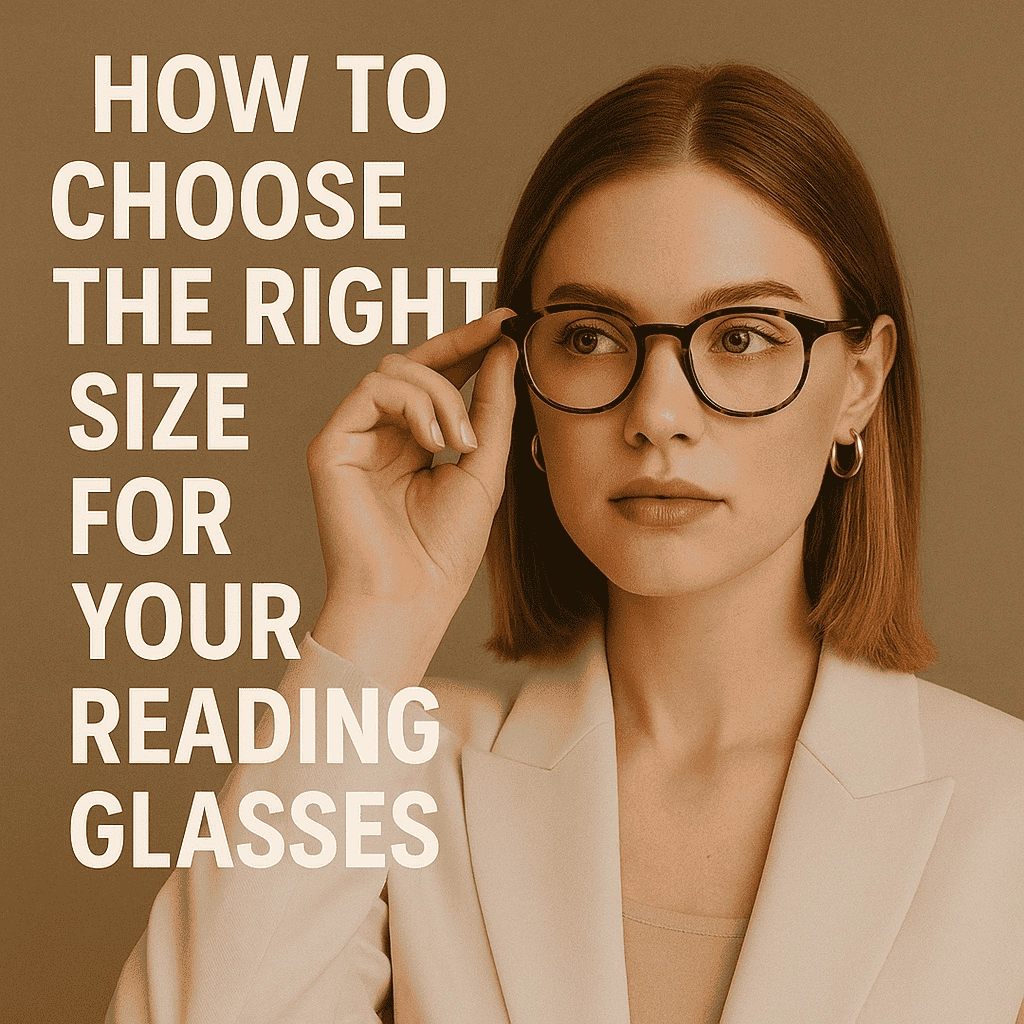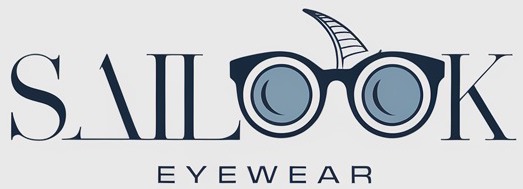When it comes to buying reading glasses, one of the most important factors to consider is finding the right size. It’s not just about the prescription strength, but the fit of the glasses themselves. A pair of glasses that doesn’t fit properly can cause discomfort, strain, and even impact your ability to see clearly. But how do you know which size works best for you? This article will guide you through the process of measuring frame size and selecting the perfect pair of reading glasses to ensure comfort, style, and optimal vision. Let’s dive into the details of frame sizing, and we’ll cover everything you need to know to make an informed decision.

1. Why Is Choosing the Right Size for Your Reading Glasses Important?
The size of your reading glasses directly affects how well they fit, how comfortable they are, and how effectively they help you see. If your glasses are too tight or too loose, they can cause headaches, skin irritation, and even make it harder to focus on close-up objects. If they don’t sit properly, your experience with reading glasses can go from comfortable to frustrating very quickly.
In addition to comfort, a good fit is essential for maintaining proper posture and reducing eye strain. Glasses that slide down your nose or pinch your ears can force you into uncomfortable positions, which may also lead to neck or back discomfort during long periods of use. The right-sized glasses help you stay comfortable and focused on your work, without distractions caused by constant adjustments.
Key takeaway: The perfect frame size will not only improve comfort but also optimize vision clarity and functionality. When you wear the right-sized glasses, you can enjoy clearer vision and a more pleasant reading experience, free from unnecessary adjustments and discomfort.
Table 1: Common Frame Size Issues and Their Impact on Comfort
| Frame Size | Issue | Impact on Comfort | Solution |
|---|---|---|---|
| Too tight | Pinches nose and ears | Causes headaches and skin irritation | Adjust nose pads or choose a larger frame |
| Too loose | Glasses slide down nose | Requires constant adjustment | Choose a smaller frame or adjustable nose pads |
| Incorrect width | Frames don’t fit face shape | Poor vision clarity and strain | Measure lens width and bridge width for a perfect fit |
2. What Are the Different Size Options for Reading Glasses?
Choosing the right frame size is essential for both comfort and style. There are three primary sizes for reading glasses: small, medium, and large. These sizes are based on lens width, as well as the overall frame width, which determines how the glasses will fit on your face.
Small frames typically have a lens width ranging from 48mm to 50mm. These frames are best suited for individuals with narrower faces, or for those who prefer a minimalist, subtle look. Medium frames, the most common size, range from 51mm to 53mm in lens width. They work well for individuals with average face sizes and are versatile enough to suit most face shapes. Large frames, usually with lens widths of 54mm or more, are ideal for people with broader faces or those looking for a bold, statement-making style.
Frame size isn’t just about the width; the bridge and temple lengths play an equally important role in ensuring a good fit. The bridge width determines how well the glasses sit on your nose, while the temple length influences how they rest behind your ears.
Table 2: Frame Size Comparison
| Frame Size | Lens Width (mm) | Bridge Width (mm) | Temple Length (mm) | Suitable Face Shape |
|---|---|---|---|---|
| Small | 48mm – 50mm | 14mm – 16mm | 130mm – 140mm | Narrow faces |
| Medium | 51mm – 53mm | 17mm – 18mm | 135mm – 145mm | Average faces |
| Large | 54mm and above | 18mm – 20mm | 140mm – 150mm | Broad faces |
3. How Do You Measure the Frame Size of Reading Glasses?
Accurately measuring the size of your reading glasses is crucial for selecting the perfect fit. The process involves three main measurements: lens width, bridge width, and temple length. Each one plays a role in determining how the glasses will fit your face and how comfortable they will be to wear.
- Lens Width: This measurement refers to the horizontal distance across the lens, from one edge to the other. The average lens width typically ranges from 48mm to 54mm. Smaller lenses are typically better for narrow faces, while larger lenses suit wider faces.
- Bridge Width: The bridge width is the distance between the two lenses and rests across the top of your nose. It’s typically between 14mm and 24mm. An ill-fitting bridge can cause discomfort or make the glasses slide down your nose.
- Temple Length: The temple length is the distance from the hinge to the end that rests behind your ears. This measurement typically falls between 130mm and 150mm, depending on the size of your head.
Knowing these measurements helps ensure you select a pair of glasses that sits comfortably on your face and stays in place throughout the day.
Table 3: Frame Size Measurement Guide
| Measurement | Description | Typical Range |
|---|---|---|
| Lens Width | The horizontal distance across the lens | 48mm – 54mm |
| Bridge Width | The distance between the two lenses across the nose | 14mm – 24mm |
| Temple Length | The length of the arms of the glasses | 130mm – 150mm |
4. What Is the Role of Lens Width in Reading Glasses Fit?
Lens width is one of the most important factors when it comes to ensuring comfort and clarity. When the lens width is too narrow or too wide, it can cause discomfort and reduce your ability to see clearly. A lens that’s too wide can make peripheral vision feel distant or blurry, while a lens that’s too narrow can limit your visual field.
The ideal lens width depends on the shape and size of your face. If the lenses are too wide, they might cause your peripheral vision to be distorted, while lenses that are too narrow can create a constricted field of view, forcing your eyes to strain in order to focus. A properly sized lens width helps optimize your reading experience, giving you a clear, wide view of the text without unnecessary strain.
It’s important to note that lens width affects both the comfort of the glasses and the functionality of the lenses themselves. Larger frames allow for better coverage, while smaller frames may be more comfortable for extended use.
5. How Does the Bridge Width Affect Comfort?
The bridge width plays a significant role in how your reading glasses sit on your face. A poorly sized bridge can cause discomfort, whether it’s from glasses that pinch your nose or slide down too easily. An ideal bridge width ensures that your glasses stay securely on your nose without causing unnecessary pressure.
If the bridge is too narrow, the glasses will pinch the sides of your nose, causing discomfort, especially after extended wear. If the bridge is too wide, the glasses will slip down your nose, requiring constant adjustment. A proper bridge width helps evenly distribute the weight of the frame across your nose, providing a balanced fit that won’t leave marks or cause discomfort.
Choosing the right bridge width also ensures that your glasses stay in place, allowing you to focus on your reading without needing to constantly adjust your eyewear.
6. How Do Temple Lengths Impact Your Glasses Fit?
Temple length affects how your glasses fit around your ears. If the temple length is too short, the glasses may sit too high on your face, causing discomfort behind the ears. On the other hand, if the temple length is too long, the glasses will slide down your nose, making them difficult to wear.
It’s essential to choose the right temple length for your face shape. Adjusting the temple length or selecting glasses with adjustable temples allows for a better fit, especially if you have specific comfort preferences. A proper temple length ensures that your glasses rest comfortably behind your ears without causing pressure or sliding.
By selecting the right temple length, you ensure that your reading glasses will stay securely in place throughout the day, providing a comfortable and effective fit for extended periods of use.
Table 4: Temple Length and Impact on Fit
| Temple Length | Effect | Best Fit |
|---|---|---|
| Short (130mm – 135mm) | Glasses sit too high on face | Small faces, shorter heads |
| Medium (136mm – 140mm) | Standard fit | Average faces |
| Long (141mm – 150mm) | Glasses may slide down | Larger heads, longer faces |
7. What Are the Key Differences Between Men’s and Women’s Reading Glasses Sizes?
There are notable differences in the sizes of reading glasses designed for men and women, which can be attributed to the natural differences in facial structure. Men typically have wider faces, requiring glasses with larger frames, while women’s frames are often smaller to fit narrower faces.
Key differences include:
- Lens Width: Men’s frames usually feature wider lens widths, ranging from 51mm to 55mm, while women’s frames tend to have narrower lens widths between 48mm and 50mm.
- Temple Length: Men’s glasses often have longer temples, typically ranging from 140mm to 150mm, while women’s frames are usually designed with shorter temples to fit smaller faces.
- Frame Style: Men’s glasses tend to be bolder and sturdier, while women’s glasses are more delicate and feminine in design.
However, there are plenty of unisex options available that cater to both men and women, making it easier to find the perfect fit regardless of gender.
8. How Do You Adjust the Fit of Your Reading Glasses?
Adjusting your reading glasses for a perfect fit doesn’t always require a visit to the optician. Small adjustments can be made at home to improve comfort and ensure a better fit. Here are some simple ways to fine-tune your glasses:
- Nose Pads: Adjusting the nose pads can help relieve pressure on your nose, especially if the bridge of your glasses feels too tight.
- Temple Adjustment: If the temples are too tight or too loose, gently bending them inward or outward can improve the fit around your ears.
- Frame Shape: Some frames can be gently reshaped for a better fit, although this should be done carefully to avoid damaging the frame.
For more substantial adjustments, such as reshaping the frame or fixing broken temples, it’s best to consult with a professional optician.
9. How Do Prescription Lenses Affect the Size of Your Reading Glasses?
Your prescription strength can influence the size and design of the frames you choose. Stronger prescriptions often require larger lenses, which means you may need a bigger frame to properly accommodate them. Larger lenses provide enough space for thicker lenses and help distribute the weight more evenly across the frame.
For those with higher prescriptions, high-index lenses are a good option as they are thinner and lighter than regular lenses, allowing for smaller frames without sacrificing comfort or durability.
Table 5: Lens Types for Different Prescription Strengths
| Prescription Strength | Lens Thickness | Recommended Frame Size |
|---|---|---|
| Low (up to +1.50) | Thin | Small to medium |
| Medium (+1.50 to +3.00) | Medium | Medium to large |
| High (+3.00 and above) | Thick | Large frames |
10. How Do You Choose Between Regular and Foldable Reading Glasses?
When deciding between regular and foldable reading glasses, it’s important to think about your lifestyle and priorities. Foldable glasses are ideal for those who need a compact and portable option. They’re easy to store and carry, making them perfect for travel or keeping a spare pair in your bag.
However, regular frames are more durable and offer a wider range of designs. If you’re looking for long-lasting glasses that you wear daily, regular frames might be a better option. They are also generally more robust and less likely to break with everyday use.
Key takeaway: Foldable glasses are great for portability, while regular frames offer durability and a wider selection of styles.
11. What Frame Materials Are Best for Different Reading Glasses Sizes?
The material of your frame is another key factor in determining the right fit. Different materials offer varying levels of strength, weight, and comfort. For instance, titanium is a lightweight, strong material that works well for larger frames, while acetate is flexible and comfortable, making it ideal for medium-sized frames.
What’s the real story? When selecting a frame material, you’ll want to balance durability with comfort. Heavier materials may be better for larger frames, while lighter materials work better for smaller or foldable designs.
12. What Should You Consider When Selecting Reading Glasses for Children?
Children’s faces are smaller and more active than adults, so selecting the right reading glasses for them requires special attention to durability and fit. Choose frames that are made from flexible, shatterproof materials to ensure safety and comfort. It’s also crucial to ensure that the glasses fit snugly to avoid constant readjustments.
Many brands now offer stylish yet durable options for kids, ensuring that they don’t have to compromise on quality or comfort.
13. How Do You Know When It’s Time to Replace Your Reading Glasses?
Reading glasses don’t last forever. Over time, you may notice that the frame is no longer holding its shape, the lenses have become scratched, or the fit is uncomfortable. If you experience discomfort or your prescription has changed, it’s time to consider replacing your glasses.
14. How to Find Your Ideal Frame Size Based on Your Face Shape?
Selecting the ideal frame size based on your face shape is crucial for ensuring both comfort and style. Your face shape significantly influences how glasses fit, so knowing which styles complement your facial features will help you choose the right size and shape.
What’s the real story? The first step is to identify your face shape. Common face shapes include oval, square, round, and heart-shaped. Each face shape has frames that work better than others:
- Oval faces: Most frame shapes will suit you, but square and rectangular frames can add structure and contrast.
- Square faces: Round or oval frames soften the angular lines of your face and help balance out the strong jawline.
- Round faces: Angular frames, such as square or rectangular glasses, help elongate your face and create definition.
- Heart-shaped faces: Oval or round frames with a wider bottom help balance out the narrower chin.
But here’s the kicker: Once you’ve identified your face shape, the next step is choosing a frame size that complements your features. A frame that’s too big or too small will not only affect how it looks but also how comfortable it is to wear.
15. Where Can You Buy Reading Glasses with Custom Sizing?
Finding the perfect pair of reading glasses is easier than ever, thanks to the growing availability of custom sizing options. Whether you’re looking for frames that fit your unique measurements or prefer a more tailored fit, you can now find reading glasses with a variety of sizing choices.
What’s the real story? Many eyewear retailers offer custom sizing options, both online and in-store. Some brands even provide the ability to try on glasses virtually before making a purchase, which is especially helpful for determining the right fit.
For those who prefer an in-person experience, visiting an optician can also help you get glasses that are customized for your face shape, prescription, and comfort preferences. Opticians can take detailed measurements and recommend frames that best suit your needs.
Ready for the good part? Many online retailers offer customizable frame options with a wide range of sizes. With these retailers, you can select your preferred frame material, color, and fit, ensuring your new glasses are perfectly suited to your face and style.
Conclusion
In conclusion, selecting the right size for your reading glasses is essential for both comfort and functionality. By understanding the measurements that matter — lens width, bridge width, and temple length — you can ensure a perfect fit that enhances your reading experience. Remember, the right frame size can make a significant difference in comfort, style, and vision clarity, so take your time to find the one that suits your face shape and personal preferences. Whether you’re buying for yourself or for others, the right fit can transform your eyewear experience, keeping you comfortable and focused all day long.
FAQ Section
Q1: What is the best way to measure my reading glasses size?
Answer: Use a ruler to measure the lens width, bridge width, and temple length. It’s important to ensure each measurement aligns with your face shape for maximum comfort.
Q2: How does the frame size affect my comfort when wearing reading glasses?
Answer: A properly sized frame ensures your glasses sit comfortably on your nose and ears, preventing pressure points and discomfort while reading.
Q3: Can I adjust the size of my reading glasses if they don’t fit?
Answer: Yes! You can make small adjustments to the nose pads, temples, or even the frame itself. For larger changes, consider professional help from an optician.
Q4: How do I choose reading glasses if I have a high prescription?
Answer: Opt for frames that can accommodate thicker lenses, such as larger, deeper frames. Some frames are specifically designed for stronger prescriptions.
Q5: Are there specific reading glasses sizes for different face shapes?
Answer: Absolutely! Square faces tend to look great in round or oval frames, while round faces benefit from angular, rectangular glasses. Frame size should also complement your features.

